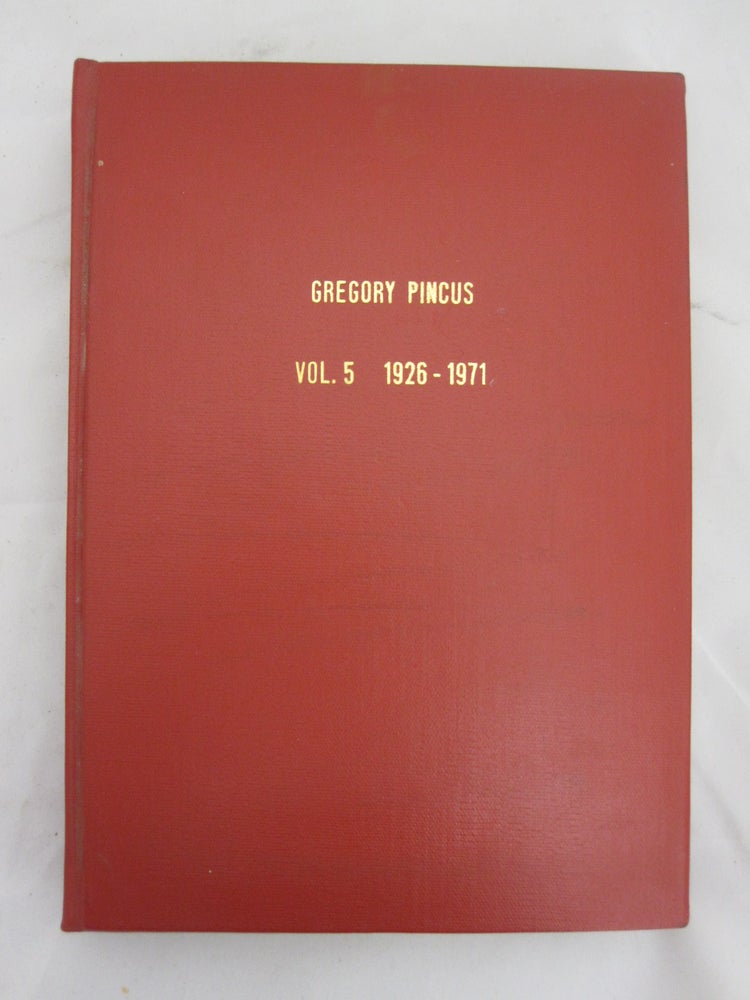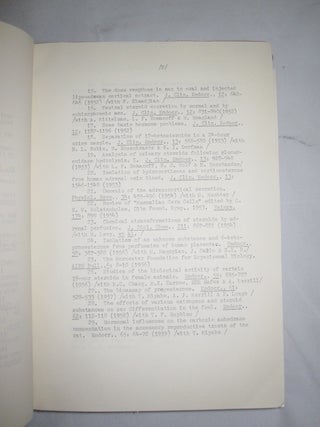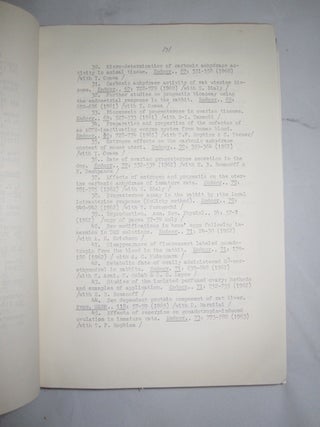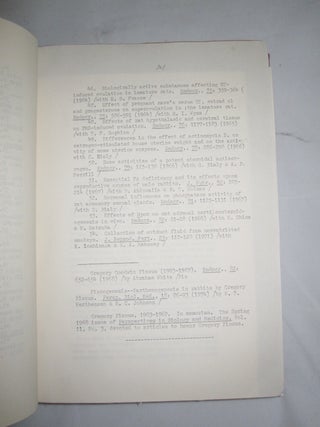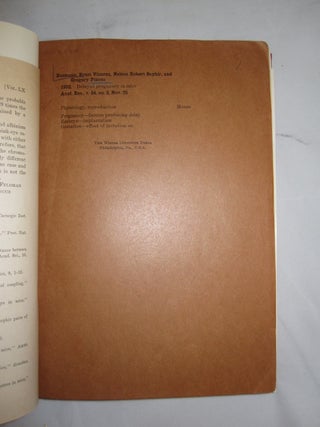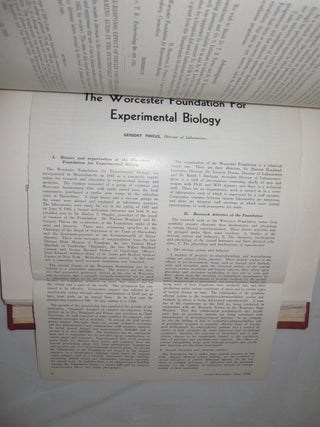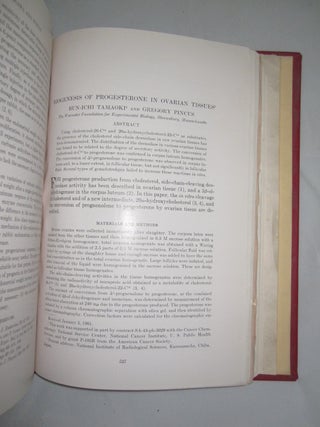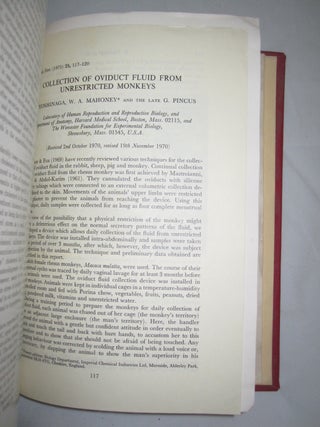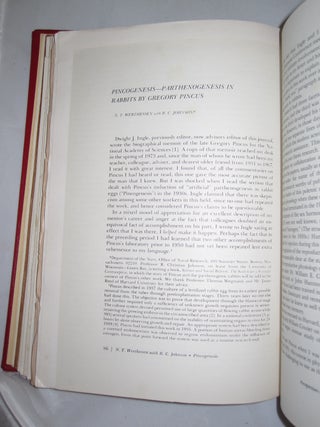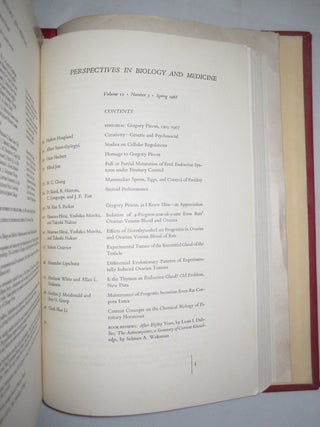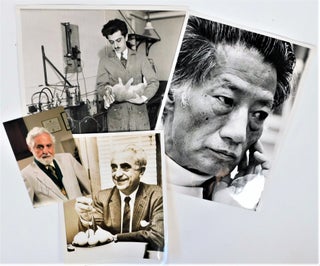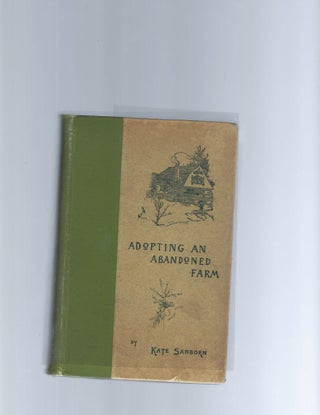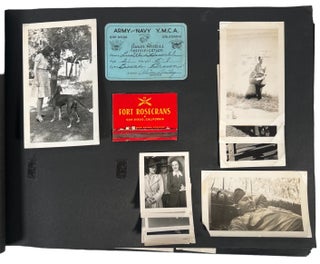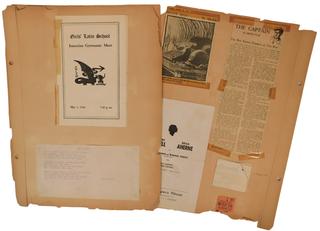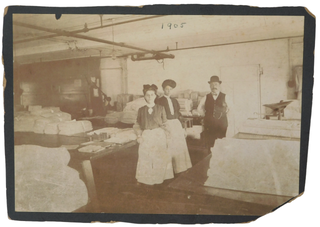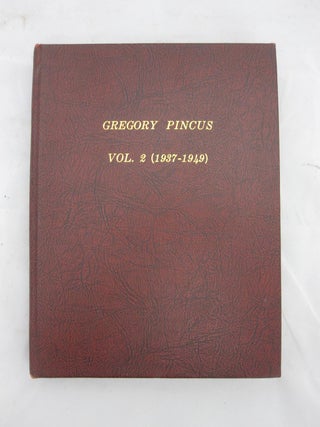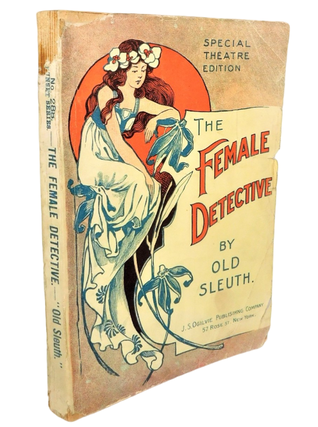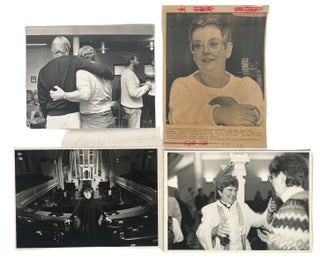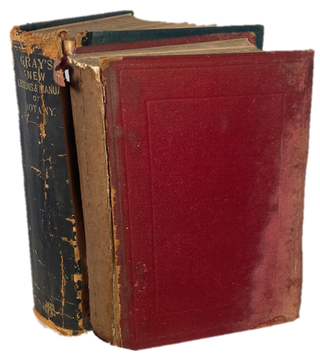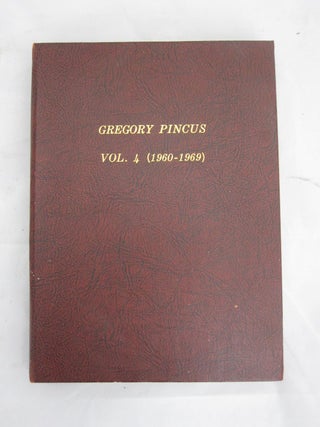Gregory Pincus Archive of 54 Rare Bound Offprints of Fertility Research Related to is Discovery of the First Oral Contraceptive Pill (1926-1971)
Archive
Gregory Pincus. Father of The Oral Contraceptive Pill. Bound collection of 54 rare offprints of Pincus’s scientific publications from his entire career, including the period when he was working to develop the first oral contraceptive pill. 10.5 x 7.5 in. Original red cloth boards. “Gregory Pincus Vol. 5 (1926-1971)” gilt on front cover. “Gregory Pincus Vol. 5” gilt on spine. Most offprints bound with original paper wrappers. Pincus was a leading researcher at Harvard University, conducting experiments on mammalian biology, when he made one of the major breakthroughs in his career: successful in vitro fertilization of a rabbit in 1934. While the importance of this research was acknowledged by all, the controversy surrounding it was overwhelming, and it cost Pincus his faculty position at Harvard University. In 1938, he joined the faculty at Clark University in Worcester, MA and in 1944, he co-founded the important research center Worcester Foundation for Experimental Biology. At these institutions, Pincus continued his work in mammalian reproduction and steroid hormone use. His outstanding work in this field brought him to the attention of Margaret Sanger, who met with him in 1951 and supported his work towards developing the oral contraceptive pill. These papers represent the entire span of Pincus’s career, including 19 published during the time that Pincus was specifically working to develop the first oral contraceptive pill (from 1951 to FDA approval in 1960). The impact of his work was tremendous--by 1965, one out of every four married women in America under 45 had used the pill, and by the time Pinkus passed away in 1967, nearly 13 million women worldwide were using it.The collection of offprints is representative of his entire career, including work related to his early, controversial experiments with in vitro, a-sexual rabbit reproduction, and spanning to the final years of career, when he was researching ways to improve the Pill and better understand its long-term effects. Aspects of these included research reports can be found in Pincus’s published books The Eggs of Mammals (1936) and The Control of Fertility (1965). In “Delayed pregnancy in mice” (1932), Pincus considers whether lactation impacts ovulation in mice; the ability to suppress ovulation was key to success with the Pill, and this paper reveals his early interest in these critical ideas. In “Physiology of fertilization in mammals” (co-authored by M.C. Chang, an important scientist at Pincus’s Worcester Foundation for Experimental Biology whose research in ‘in vitro’ fertilization contributed to the first “test tube baby”), Pincus outlines some of the research questions that must be addressed in order to develop an oral contraceptive. “There is a great deal of work to be done in order to better understand the physiology of fertilization in mammals, for instance: the physiology of the fallopian tubes where fertilization occurs, the physiology of sperm in the female tracts, the interrelation between spermatozoa and ova in the tubes, the histochemistry of ova before and after the penetration of spermatozoa, and the practice of activation and fertilization in vitro.” The final paper (published posthumously) lists experiments on rhesus monkeys, which is notable since Pincus conducted most of his research on small mammals such as mice, rats, and rabbits.
A 1956 update on the “The Worcester Foundation for Experimental Biology” (co-founded and headed by Pincus) lists “Reproductive Physiology” as one of the main focus of the WFEB and summarizes pioneering breakthroughs with in vitro technology and cryogenic preservation of fertilized eggs. This report was released the same year that the first clinical trials of the Pill began in Puerto Rico. “Studies of mammalian reproduction have been conducted at the foundation since its inception. The physiology and biochemistry of eggs and sperm, the nature of fertilization and artificial parthenogenesis and the factors affecting the development of the fertilized egg have been studied. The demonstration that fertilized mammalian eggs may be stored and shipped in the cold was first made by Foundation workers. The peculiarities of fertilization in several species have been investigated and the requirements of eggs and sperm for fertilizing capacity determined. The enzyme systems of the developing ovum are now being investigated in detail. The hormonal requirements for ovulation and early development have been of particular concern. This has involved studies of the pituitary-ovarian axis, the measurement of gonadotrophin release and inhibition, the role of ovarian hormones and various steroids related to them in uterine growth and ovum development and implantation.”
Also includes 2 memorial publications printed after his death in 1967, including the full issue of Perspectives in Biology and Medicine, Vol. 11, No. 3 (Spring 1968), which was planned in honor of his 65th birthday in April 1968; Pincus died the previous year, and so “some of the essays were completed before his death. No author has been asked to change the tone of the essay which was intended to honor Gregory while alive.” Includes 14 articles on fertility, effects of various hormones, and endocrinology by esteemed colleagues including M.C. Chang, Hudson Hoagland, and Alfred Jost. In his essay, Chang recalls when he first met Margaret Sanger and worked with Pincus to develop the pill. “In 1950, before we started our oral contraceptive project, Pincus accompanied two ladies, Mrs. Margaret Sanger and Mrs. Stanley McCormick on a visit to my laboratory. I remember quite vividly that, after I told them what I was doing, one for the ladies remarked to me, ‘I do envy you working in the laboratory; you must have lots of fun. ‘ I answered her rather abruptly, ‘Sure enough, but I hope it can be useful!’” These essays are a touching tribute to Pincus from those who worked closely with him, in addition to being scientifically relevant papers, worthy of publication in a leading academic journal.
Selection of the 54 offprints listed below. Complete index included in object photographs. Offprints are the rarest and most collectible forms that a journal article can take. Few are printed, perhaps only two or three, and these are usually given to the authors of the piece. Sometimes authors give them away to colleagues, so it’s not unusual to find offprints with presentation inscriptions or important ownership signatures. At the time this description is being written, none of the copies listed below are listed in any institutional collections, according to OCLC Worldcat:
“Delayed pregnancy in mice.” The Anatomical Record, Vol. 54, 1932.
“The effect on lactating mice of injecting an extract of the urine of pregnancy.” American Journal of Physiology, Vol. 103, 1933.
“The steroid hormones.” Currents in Biochemical Research, 1946.
“The chemistry of adrenal steroids.” The American Journal of Medicine, Vol. 10, 1951.
“Physiology of fertilization in mammals,” Physiological Reviews, Vol. 31, 1951.
“Some basic hormone problems.” The Journal of Clinical Endocrinology & Metabolism, Vol. 12, 1952.
“Chemical transformation of steroids by adrenal perfusion.” J. Biol. Chem., Vol. 211, 1954.
“Isolation of an unknown substance and 6-keto-progesterone from perfusates of human placentae.” Endocr., Vol. 58, 1956.
“The Worcester Foundation for Experimental Biology.” AIBS Bull, Vol. 6, 1956.
“Biogenesis of progesterone in ovarian tissues.” Endoc., Vol. 69, 1961.
“Effects of estrogen and progestin on the uterine carbonic anhydrase of immature rats.” Endocr. Vol. 70, 1962.
“Biologically active substance affecting CT-induced ovulation in immature rats.” Endoc., Vol. 75, 1964.
“Collection of oviduct fluid from unrestricted monkeys.” J. Reprod. Fert., Vol. 25, 1971.
Item #16915
Price: $4,500.00
See all items by Gregory Pincus

